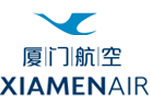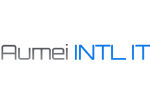This article was written by Yong Kaichang of KWM (International Partner).
In this article, we will discuss practical tips in 10 key areas for the better and effective management of outbound M&A transactions by PRC investors. This article will be published in two parts. In this Part 1, we will first discuss the choosing of lawyers, reviewing legal fees, forming the transaction structure, setting a timetable and managing due diligence.
1. Choosing your lawyers
Choose an international law firm with the core team servicing you based in China if:
- this is your company’s first (or first few) outbound transaction(s);
- your internal deal team does not have the appropriate international experience/expertise and language fluency; and/or
- the transaction is a complex, multi-jurisdictional matter.
Conversely, you may prefer to go directly to a local law firm in the target country/state if:
- your company has proper experience in outbound transactions;
- your internal deal team has the necessary international experience/expertise and language skills; and
- the transaction is a simple, single-jurisdiction matter.
Some law firms have a network of offices in numerous countries around the world. Others have a wide, loose network of partner firms in various countries. Engaging such law firms would be convenient if your transaction involves multiple jurisdictions. However, the more important thing is to ensure that:
- your lead legal team has extensive M&A experience across a range of sectors, great communication and language skills, and excellent deal management skills; and
- the supporting local teams have the necessary local expertise.
Choose a partner and legal team with the necessary qualifications, expertise and experience. This may seem obvious but it bears emphasizing. For example, if the transaction document is governed by common law, make sure that your lawyer is common law-qualified, such that he understands the relevant legal concepts and can identify the material legal issues. Even if your lawyer is common law-qualified, make sure that it is not just a paper qualification and that he has the relevant experience and expertise in the practice of common law. Be wary of lawyers who claim to have done and to be able to do everything in every practice area in every sector, they don’t exist.
2. Reviewing legal fees
Capped fees by law firms are commonly requested for by buyers in a bid to control their transaction costs. When negotiating fees with law firms, consider instead which fee proposal provides a genuine, honest and reasonable figure given:
- the necessary work scope;
- the expertise required;
- the level of service your company requires;
- the objective level of complexity of the deal; and
- the value-add that the law firm can bring to your transaction.
It is typically difficult to provide capped fees for outbound transactions due to the large number of variables outside of the law firm’s control (e.g. whether any government/regulatory approvals are required and if so, how complicated the approval processes would be; whether any serious or unusual problems will be discovered during due diligence and if so, what the time and costs to fully assess and address such problem would be; whether negotiations will be long-drawn and extensive document revision will be required). Good legal services are a discernible professional service, not a simple and indistinct retail good.
Capped fees can be more easily provided in certain types of transactions where there is clear industry practice for the transaction documents to adhere to some standard format (e.g. certain bank, securities and derivatives documentation). Some law firms may agree to capped fees to get their foot in the door first, but would charge progressively more for out-of-scope work moving forward. If the agreed capped fee is low, you also run the risk of the law firm allocating less time and resources to your transaction. If you require law firms to provide a fee cap, ensure that the work scope provided meets the transaction requirements and that the stated assumptions do not unduly limit the law firm’s work and responsibilities.
3. Forming the transaction structure
Discuss with your advisors and set up an appropriate acquisition structure that:
- maximizes tax efficiencies;
- has key holding entities situated in appropriate offshore jurisdictions with a simple and clear regulatory and compliance system; and
- satisfies your business, financial, legal and other considerations.
Consider whether a purchase of shares or assets would better meet your commercial objectives. Generally speaking, a share purchase is faster and simpler than an asset purchase, but is riskier as the buyer assumes the rights and obligations of the target company.
Assess whether a purchase of existing shares or a subscription of new shares would be more appropriate. In a purchase of existing shares, the purchase price goes to the seller. In a subscription of new shares, the target company gets the money, which may be preferable for greenfield projects requiring a capital injection.
Consider whether a complete, partial or staggered buy-out would be more appropriate. In a complete buyout, a buyer gains absolute control of the target company, but would lose the valuable contribution and participation that a seller could provide as an ongoing joint venture partner. A seller who remains as a shareholder and is motivated to continue building the business via earn-outs or other management incentives could create more value for the target company in the long-run.
If you are acquiring or investing in a public listed company, additional considerations relating to listing rules, securities regulation and takeovers code could apply.
4. Setting a timetable
In our fast-paced market today with increasing competition for dwindling resources, every deal invariably comes with intense time pressure. Every deal is always urgent. Under this pressure, buyers sometimes cut corners by dispensing with certain checks and requirements or by rushing through documentation and procedures, only to have problems crop up later. More haste, less speed. Outbound deals can take more time due to different time zones, co-ordination across multiple jurisdictions, language differences and the need for cross-translation, and governmental and regulatory requirements.
Plan for a realistic and achievable timetable that balances the need for speed against the need for prudence. Getting the deal done properly is just as important as getting the deal done quickly.
5. Managing due diligence
Discuss with your advisors and ascertain the scope and depth of due diligence required to meet your key objectives and manage your key risks and concerns. Due diligence helps buyers to identify problems and:
- decide whether or not to proceed with the transaction and if so, at what price, terms and structure;
- resolve, or allocate responsibility for the resolution of, such problems; and
- determine how best to protect themselves against such problems.
Choose a full due diligence report if you need to have a comprehensive and detailed understanding of the target for pre-transaction assessment or post-closing integration purposes. This approach is not common nowadays partly due to tight transaction timetables and cost constraints.
Choose a “red-flag” due diligence report if your focus is only to ascertain if there are any material issues which would affect your decision to buy or the terms on which you buy. This approach is more common nowadays, where only material risks and issues are set out, and lawyers are given appropriate discretion to determine which risks and issues are material according to a sensible materiality threshold.
Choose a combination of the two where you primarily require a “red-flag” due diligence report, but need a fuller report on certain aspects of the target or the transaction. For example, where the focus of the acquisition is on specific assets and technology, where the target is in a niche industry subject to special regulations, or where critical problems (e.g. environmental pollution) are present. Special due diligence arrangements may also be needed in certain situations, such as “clean team” arrangements where there are anti-trust implications.
Don’t overlook due diligence. In some small or urgent deals, some buyers skip due diligence or only conduct very limited due diligence, believing that they would only lose their (small) investment if the investment turns sour. This is risky. Some potential risks and liabilities could extend beyond the immediate corporate entities in question. A mismanaged deal could also cause damage to reputation and goodwill that could far exceed the size of the initial investment.
6. Handling regulatory approvals
PRC outbound investment approvals and currency controls were tightened last year in a bid, amongst other things, to curb outbound investments where buyers have no core competence and which do not improve domestic production. Since then, clarification and further notices have been issued by the PRC regulators, the latest being the Administrative Measures for Enterprise Outbound Investment issued by the National Development and Reform Commission on 26 December 2017 (which will be effective on 1 March 2018). There is more clarity now on the latest PRC outbound investment policies and market outlook is becoming more optimistic. Government or regulatory approvals in the target country may also be required, especially if the acquisition involves a sensitive industry, region or asset.
The global political and socio-economic climate is in a state of flux with a new wave of protectionism and anti-globalism. Plan ahead and pro-actively engage with the relevant regulators to ensure that your transaction can be completed in a prompt and smooth manner.
7. Understanding transaction documents
Recognize that your transaction documents are a unique set of documents that need to specifically and comprehensively address parties’ issues, risks and concerns in the transaction at hand. There is no transaction document template that would apply to all transactions and all circumstances, whereby parties would just need to fill in their name and details. Even certain boilerplate provisions that are regarded as market-standard should still be reviewed and revised where necessary to fit your transaction.
The first draft of each transaction document should in principle be prepared by the party whose interests the document is primarily intended to protect. For example, the first draft of a sale and purchase agreement should be prepared by the buyer, as the seller would be inclined to produce a simple first draft with little or no warranties. Similarly, the first draft of a shareholders agreement should be prepared by the minority shareholder, as the majority shareholder who would effectively control the company by itself would be inclined to produce a simple first draft with little or no minority shareholder protection clauses. Otherwise, the chance of extensive additions and redrafting by the counterparty would be higher, which would incur more time and costs in the process. Also, a badly-drafted first draft would need to be substantively amended and possibly even redrafted, which would also incur more time and costs. Thus, always instructing your lawyers to only review (and not draft) transaction documents in the belief that it would save costs may not ultimately work out.
A good set of transaction documents need to be legally sound. They also need to clearly and comprehensively:
- set out parties’ intentions and agreements;
- allocate rights and responsibilities; and
- anticipate likely risks and future events and set out how they are to be managed,all with the aim of avoiding or minimizing future disputes between parties.
8. Conducting negotiations
Have a list of what your key issues and focus on them. Don’t lose the forest for the trees. Pick your battles and don’t waste time and effort fighting on every point.
Understand prevailing international market standards for transaction arrangements and provisions. For example, in a global seller’s market marked by increased wariness over the PRC outbound investment approval and currency control regime, requirements for deposits and reverse break fees are becoming the norm. Don’t, however, blindly accept what your counterparty claims to be “market standard”. Market standards are not uniform between countries; what is “market standard” in the seller’s country may not be “market standard” in the buyer’s country. What is eventually agreed will, to a large extent, depend on which party is in a stronger bargaining position.
Tailor your negotiation approach according to:
- the cultural background of the counterparty;
- the relative bargaining strength of the parties; and
- the specific commercial context of your transaction.
For example, a buyer could choose to be less aggressive where the seller will remain as a minority shareholder and joint venture partner, and thus be “in the same boat” as the buyer after closing. As opposed to where the seller will take his money and exit completely on closing.
Put yourself into the shoes of the counterparty. If a joint venture is contemplated, ensure that both your goals and interests are aligned so as to avoid being strange bedfellows.
Be commercial. Adopt a give-and-take approach. For every difficult problem, it is always possible, with the assistance of a good lawyer and as long as parties keep the end goal in mind, to work out a creative solution that is mutually satisfactory. Negotiate with a win-win outcome in mind.
9. Effect of Closing
Closing is only a milestone in the transaction. It is not the end.
From a legal perspective, the fact that a transaction has been signed and closed does not automatically mean that legal and regulatory matters were all properly sorted out and well-handled. Whether or not a transaction was well-managed will really only be revealed when there is a dispute between parties or an investigation by the relevant authorities. A well-managed transaction and properly-drafted transaction documents will stand up to scrutiny in the event of any court, legal or regulatory challenge.
From a business perspective, closing is the beginning of the integration of two separate business identities and cultures, which must be managed well if the business is to continue to prosper. Retention of key staff, choosing a bridging team with the appropriate background and language capabilities, promoting assimilation between teams, and maintaining regular and open communication, are all important factors in this process.
10. Managing disputes
Ensure that your transaction documents have a clear procedure for dispute resolution, which should as far as possible aim to resolve possible differences between parties in an amicable manner without needing to go to court or arbitration.
The governing law and dispute resolution clause in your transaction document is not a simple boilerplate clause. It should be drafted considering conflicts of laws principles and factors such as:
whether a court or arbitration mechanism would be more suitable for the parties (e.g. would privacy and confidentiality be needed? would specialist or technical knowledge be needed to adjudicate the matter?);
- the maturity of the relevant legal systems;
- the location of each party’s assets; and
- the ease and cost of enforcement of judgments or decisions.
- http://www.kwm.com/en/cn/knowledge/insights/10-practical-tips-for-effective-managemen-of-prc-outbound-ma-part-2-20180312















